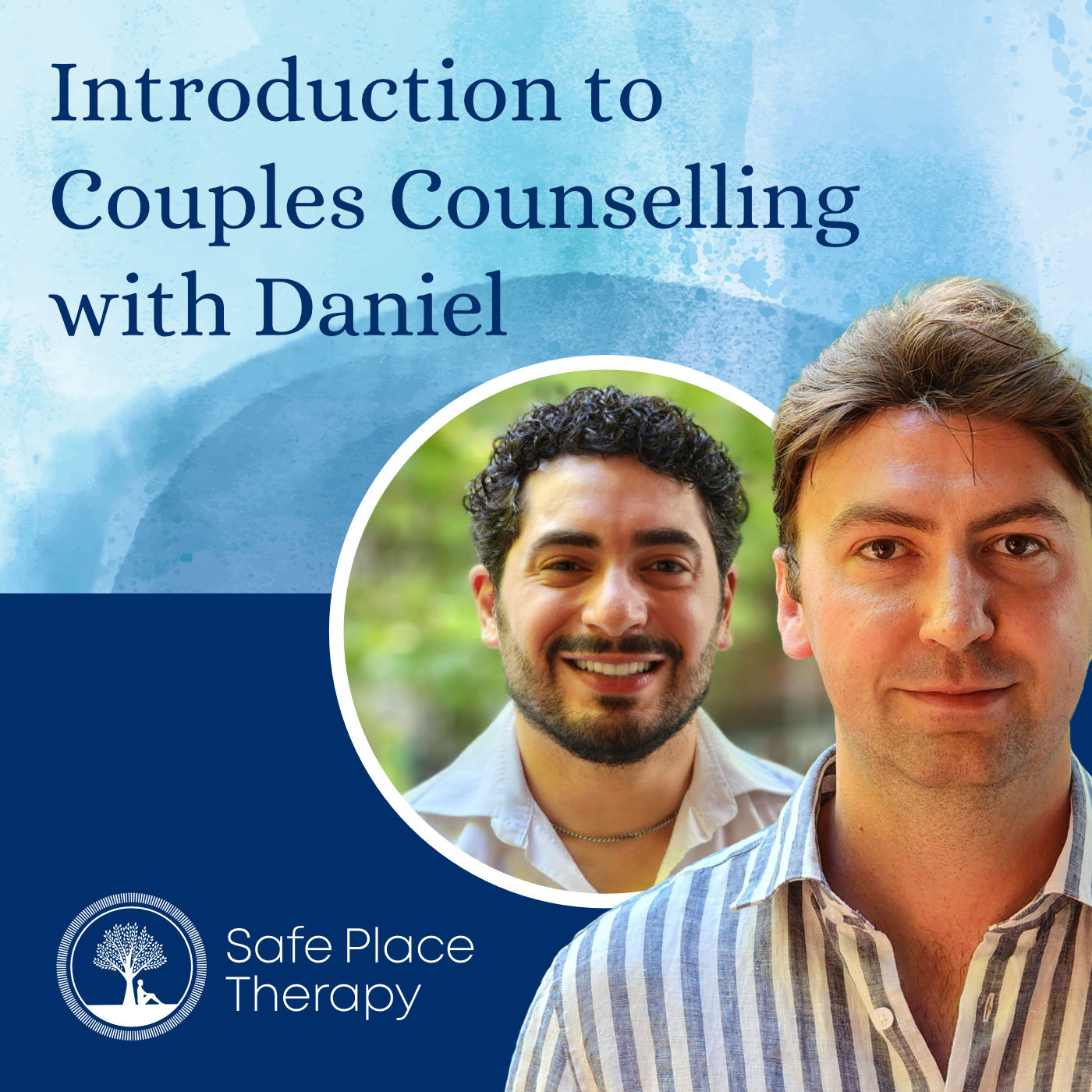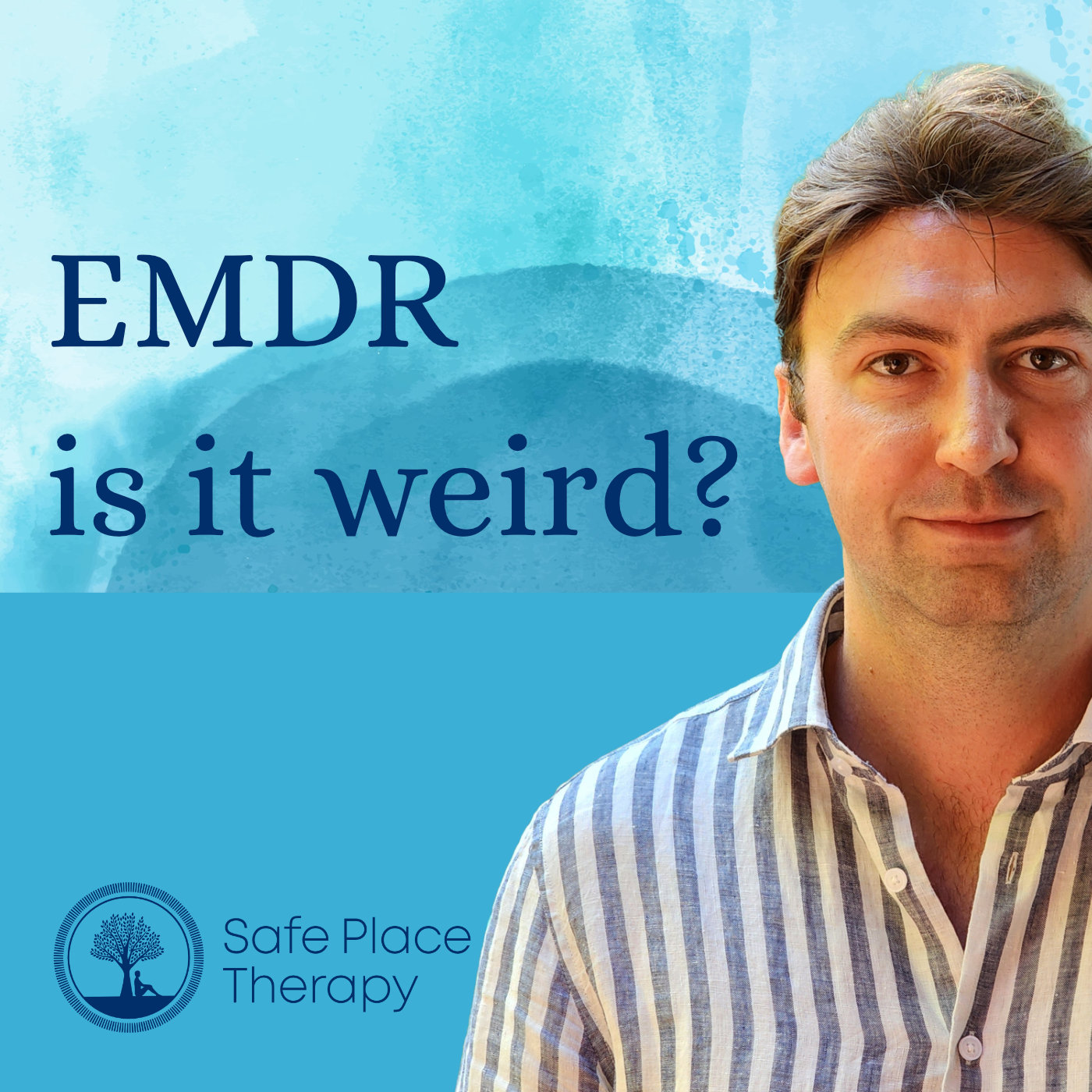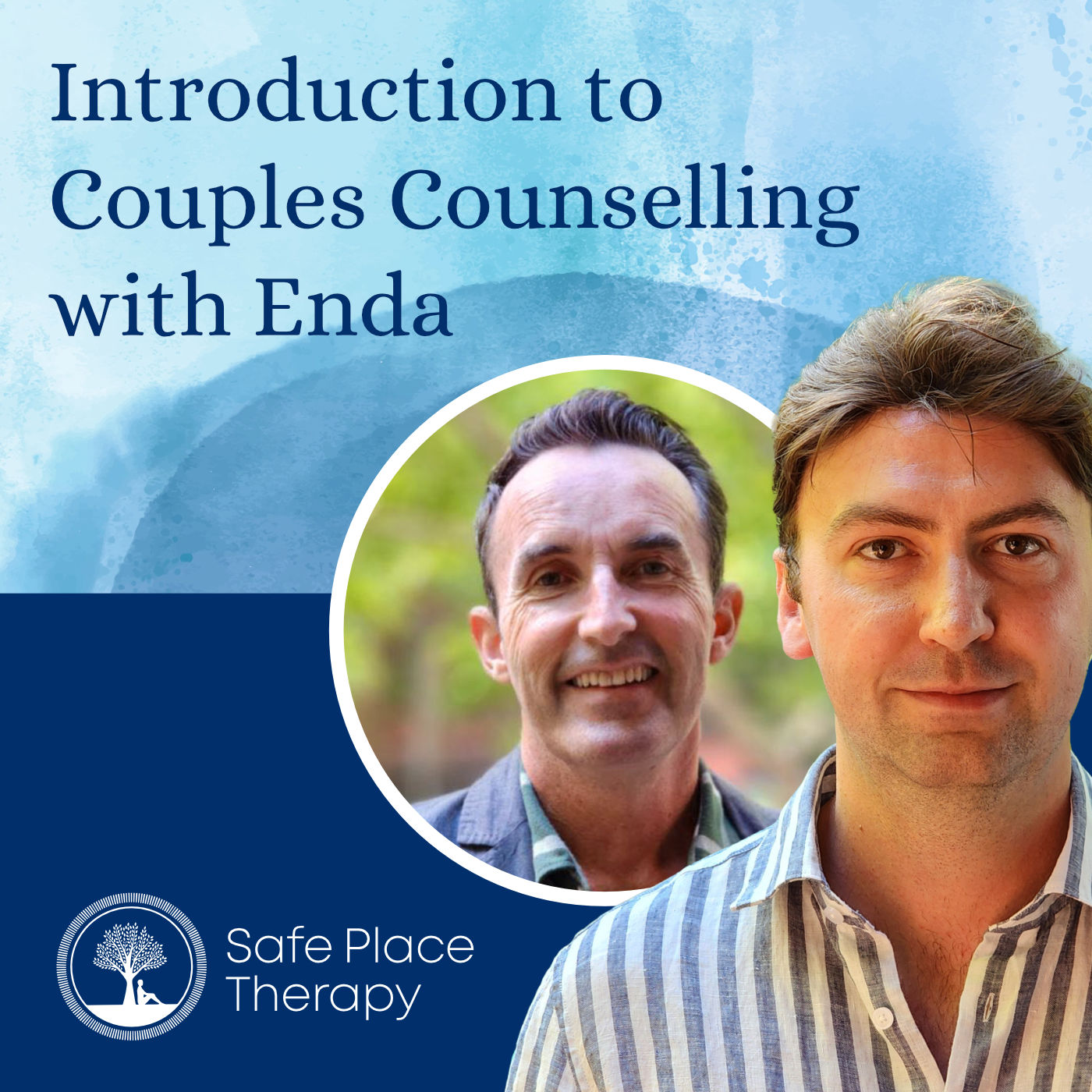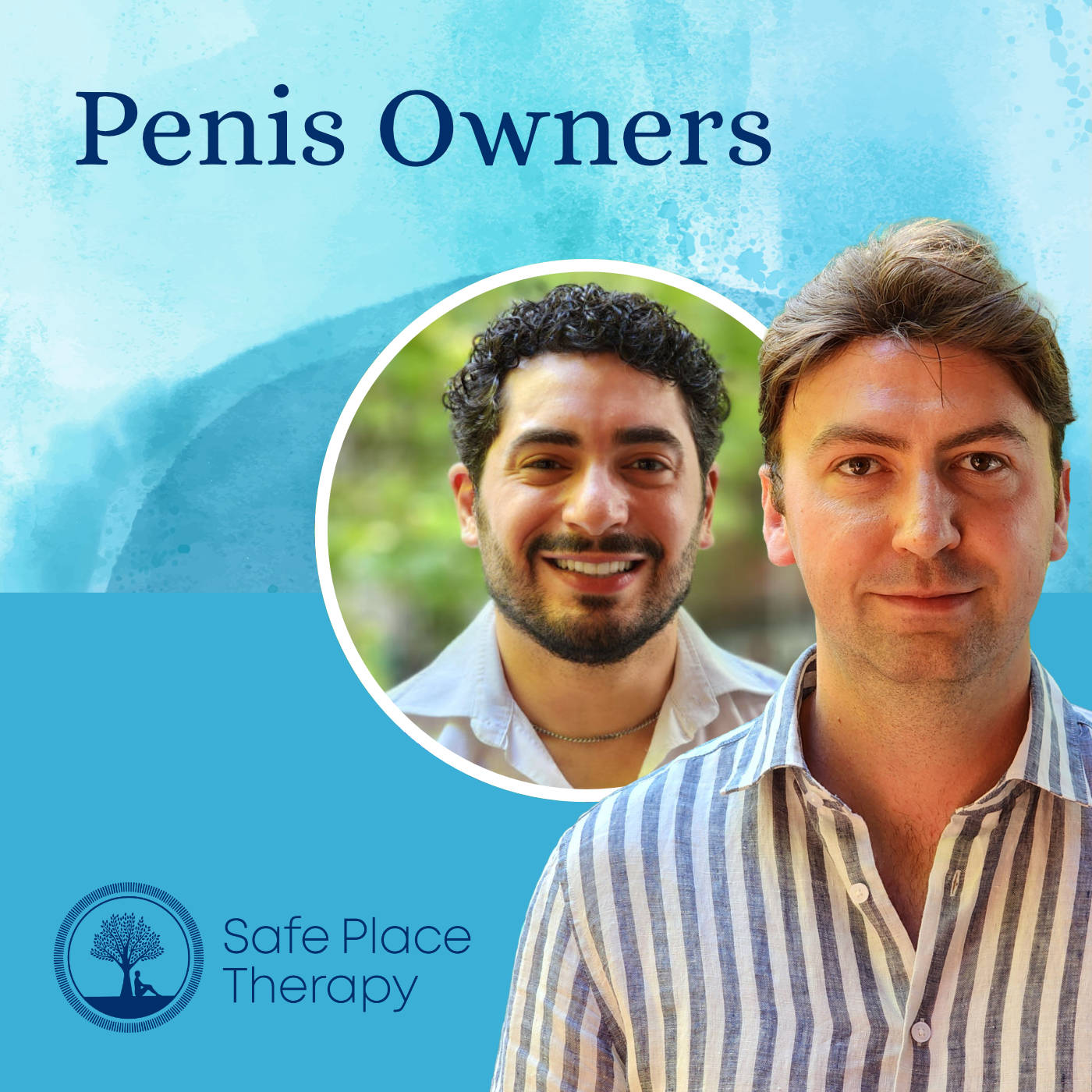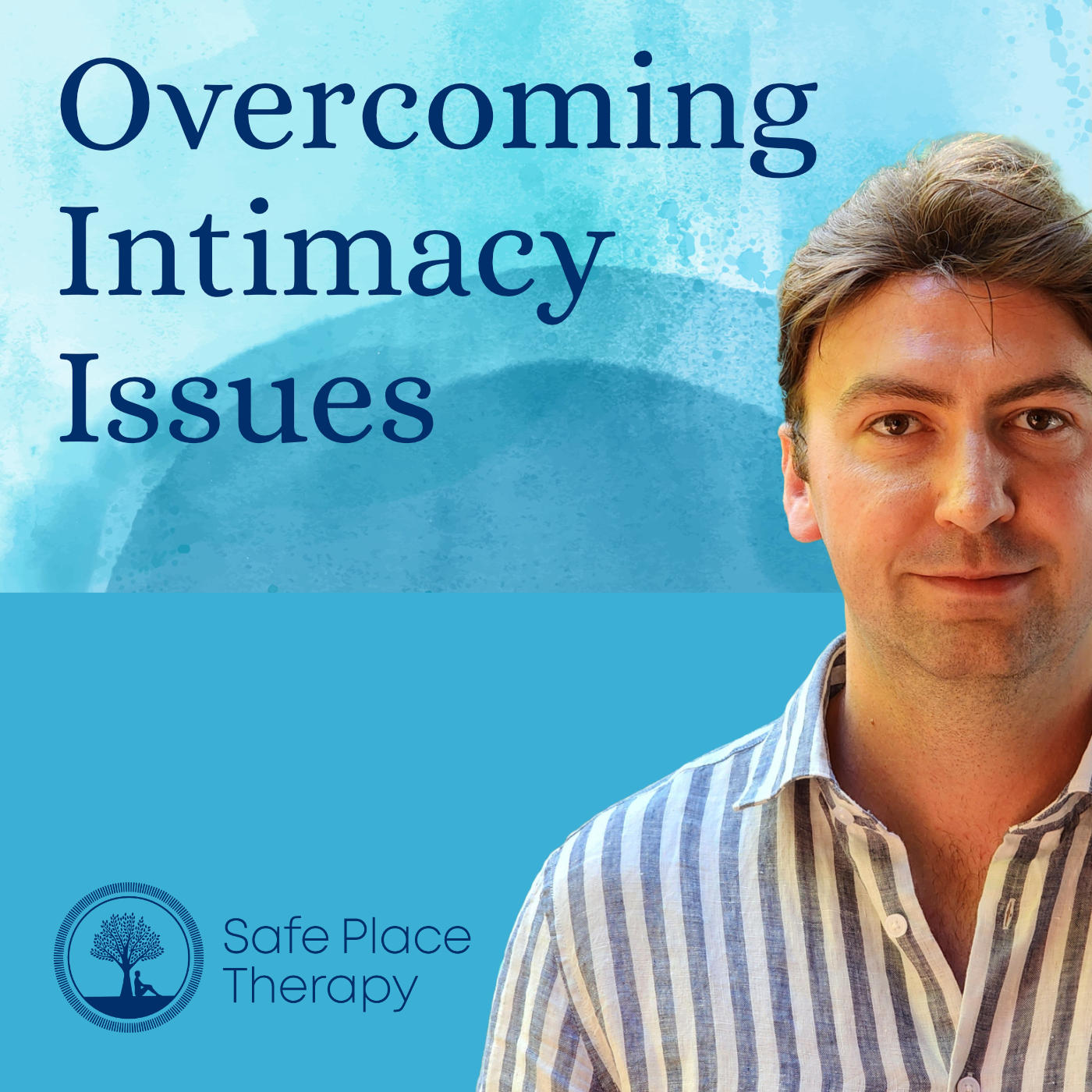Episode Transcript
[00:00:00] Speaker A: Foreign welcome to the Safe Place Therapy podcast channel. My name is Stuart Shevorden and I am one of the owners and directors of Safe Place Therapy and I'm a mental health social worker. I'd like to begin by acknowledging the traditional owners of the land in which we meet today. I would also like to pay my respects to elders past, present and emerging. We record this episode on in all our episodes in the Kulin Nation, but also on other beautiful lands across Victoria.
Welcome, everyone. We're doing a podcast today with Daniel Di Petro, who is a counselor and sexologist with Safeplace Therapy. Thanks for joining us, Daniel.
[00:00:50] Speaker B: Thanks for having me on stuff.
[00:00:52] Speaker A: Yeah. So we're going to take some time today to talk about counseling with yourself and what couples can kind of expect from our first session or first engagements with you.
So how would you kind of describe what couples counseling is like when someone comes to see you?
[00:01:10] Speaker B: I like to think being an emotion focused therapist, I really like to focus on the emotional qualities that come into the room and no matter how difficult they are, creating a safe space for them and sitting with them. Because emotions carry very important information for our needs. And perhaps there's been either overregulation or under regulation on our emotions that we're not able to state them in our relationship. So really creating that emotional awareness and staying with that emotion because again, carries very important information. And once we're able to become aware of what that is, we can stay state that. And again, providing the tools and that a client can regulate and can say them in a way that comes out adaptive and in a way that comes out where a partner can actually receive that and hear that and act upon it.
[00:01:58] Speaker A: Great. Okay.
And then, yeah, I guess a couple or a partner, individual person who hasn't had that much engagement with emotions, how do you move them through that process of being. Being sad or being okay, like, how do you do that?
[00:02:17] Speaker B: I mean, even just naming that someone said, if someone hasn't had great scaffolding, whether that be from a historical aspect from caregivers or whatever that may be, you know, just actually expressing that is quite powerful. And, and for me to reflect that to them, you know, reflect their sadness and for them just to sit with that, you know, yes, it may be a little bit uncomfortable, but they're able to then talk deeper into that once they hear, hear that empathic kind of reflection there on, on their experience. And, you know, just being heard can be enough for a client just to walk away feeling that change or that emotional shift internally.
Yeah. So I really like to invigorate hope within couples work. And particularly, you know, I. I like calling it partnership work because I. I like working with open relationships as well, so I like to involve the many groups contained there. But with my partnership therapy, it's hope. And there's a lot of partnerships that come in that don't feel quite hopeful. So I really like to invigorate that and hopefully warm, you know, someone that they feel like they could talk about their experiences in a place that's safe and secure for them.
[00:03:28] Speaker A: Okay, so what would hope kind of look like? What would the feeling be? I suppose. What. What. What do you think clients see related to hope?
[00:03:39] Speaker B: Yeah, in that their experiences are actually heard, because perhaps when they come into the space, they don't feel like perhaps in their relationship that their experiences are heard by the other person. And so I. I like to invite and. And explore perhaps what their side of you is, and explore in a way that each person gets their view across and feels actually heard in the first session, and we're aligned in terms of moving forward for the relationship.
[00:04:05] Speaker A: Great. Yeah. I often hear from couples or clients in general that they don't feel hurt from the people around them.
So how do you slow that down? What. What are some things that. That help people feel heard in. In that first session?
[00:04:19] Speaker B: Yeah. So I really like using the tools from Gottman Methods, and it's the turning towards. And, you know, they looked at three communication styles there, and they did a lot of research and longitudinal studies as to what made partnerships stay together for long periods of time. And they noticed that there were three communication styles in terms of turning against. And that could be someone might be coming home from work, and they may be saying to their partner, hey, babe, I've had a really tough day today. And the other person may say, you know, you think you've had a tough day? I've had a tough day too. Right. So they bring it back to their experience. Or there's a turning away where, you know, someone might come home and say, hey, babe, I've had a really tough day today. And the answer might be, I'm wondering what's for dinner tonight.
[00:05:05] Speaker A: Right.
[00:05:05] Speaker B: So completely missing the target, but turning towards this, accepting that bid, and it's, you know, hey, babe, I've had a really tough day today. Yeah, I'm hearing that. Let's sit down and talk about it. Or, you know, what are you needing from me right now? So really accepting and hearing what that person's saying. And I feel like whenever I talk into that first communication tool, it really allows the partnership to express their authentic selves and be able to be heard in their experiences.
[00:05:33] Speaker A: So you're already tapping into that. So some of the issues that might be raised within couples counseling. So communication is a big one. What are some other kind of communication issues you might kind of see or noticed in a first session?
[00:05:46] Speaker B: Yeah. So particularly, there could be things like stonewalling in terms of one person may be emotionally dysregulated or activated in session by what another partner has said. And that tends to make one of the people shut down after getting blasted with kind of this sense of, you know, why you listening to me? Why aren't you hearing me? And that's essentially where that kind of emotional disregulation is coming from. Is this. This desperate attempt for a bid. So it's really slowing that down and. And breaking down. Perhaps what they're doing is not malicious or not made for an attack, but it's really this bit of connection.
[00:06:23] Speaker A: Yeah. And what are some other issues that you might notice or see in the first session or. Or why?
[00:06:29] Speaker B: Yeah, yeah, typically, I'd say sexual communication issues in terms of what their needs may be in that space, whether that be emotional difficulties, in terms of ways in that they're held in their experiences after sexual intimacy, or whether it is just navigating sexual intimacy in general, whether or not it's talking about wanting to open up their relationship or wanting to take their relationship to a different phase. So I work with clients around finding that middle ground and a safe place to talk about those experiences and get the relationship that they're wanting or to see if that's even a possibility within their relationship.
[00:07:08] Speaker A: Okay. I wonder how you help clients go there. Like, they seem, like, pretty. Pretty spicy.
What do you think kind of helps them get into that in a safe, comfy way?
[00:07:21] Speaker B: Yeah. Well, first, it's starting off at the very basics. Right. So are we getting our emotional needs met? And particularly if we're talking about opening up a relationship. You know, sometimes one relationship is quite hard to hold on itself. Right. And work on in general. So it's focusing on the relationship that I have in the room. Right. And that would be how we getting each other's emotional needs met. You know, do we feel that we share express delight with each other? You know, I like working with a lot of Jessica Fern's work. She wrote the book Polysecure, but I feel like her acronym for hearts really resounds with a lot of relationships, whether they be monogamous or otherwise. And it's basically creating a sense of safety within self. You know, the H stands for being here and present. So how are we being here and present for our partners? Right. The ease expressed delight. So how are we expressing delight? You know, sometimes that we could have a big case file of what isn't happening in our relationship or what our partner is doing wrong. So it's going back to, well, what is our partner doing? Right. And that's going back to that. Express delight in even the smallest and minute things. And then the A is attunement, you know, getting attuned to what we're needing in the relationship, our emotional needs. Here the R is rituals and routines are creating those boundaries and structure within the relationship, but also creating a ritualistic space, whether that be for intimacy or otherwise. And then the T is, you know, turning towards. So how do we make connect with those bits of connection there? And how do we even turn towards our own emotions in this moment? So I really like exploring that and broadening that for my clients.
[00:08:59] Speaker A: Yeah. Do you. I wonder if you get a balance between the really big hot topics that are hard to talk about or is a lot of the work kind of those communication tools, those kind of basic concepts that get in the way of people connecting?
[00:09:13] Speaker B: Yeah, I mean, the communication tools is always a good one to start off on, because typically that's what I'd say come into the room here is just communication difficulties or communication breakdowns where they're not able to state needs properly. But definitely I've had partnerships that have come in where they do have those big ticket items and they do want to explore those hot topics. And I just find that work so fascinating. Enjoy it very thoroughly.
Yeah, yeah. So particularly in the first session, it's feeling heard. As long as I feel that their experiences have been heard, they walk away feeling that they've actually had a positive experience and that there's actual movement and hope for the relationship. I do like inviting in my first session a little walkway to, whether that be love languages, you know, getting attuned to the five love languages there, because perhaps what they've been trying to do is meet each other's needs in ways that they would like their needs met. And so I like just giving them that exercise just so that they have a bit of a translator in terms of what the other person may be needing, that they could actually connect. Because on the circular model of sexual desire, if we're not getting our emotional needs met, we're not going to want to engage or actually receive any sexual Advances from our partners. So starting from that emotional intimacy space is very crucial. But again, making sure that they felt heard and that each partner, their experiences have felt heard in session, that they walk away with tools that. How they can navigate that at home and express that at home.
[00:10:42] Speaker A: Okay, so working with the clients that you've worked with, I'm wondering what feedback they give to you in terms of your style, in terms of how you work in the room with them.
[00:10:53] Speaker B: Yeah. So, you know, I've had clients that, you know, I. I'm very much hard on my sleeve and try and bring my authentic self into the room. And I feel that that's quite important for my work because I'm modeling that for my clients, is that I'd love for them to be as authentic as I am in the space for. For themselves and for their relationship. So I do get a lot of comments about that, Whether that be the candles I bring in and in the sense of how I set up my room. You know, I've had clients talk about some of the tools that I bring in, whether that be for psychosexual education. You know, I'm very open about that and very happy to answer any questions. So I feel like having this kind of openness and authentic nature about me really helps the therapeutic space and for us to work together.
[00:11:40] Speaker A: Going back to the spicy comments or maybe one partner having a real issue around intimacy and the other partner not. How do you not take sides? How do you kind of really navigate, you know, two people in a room?
[00:11:55] Speaker B: Yeah, yeah. Well, I really like doing this exercise that I have here. So, you know, I could use any object in the room right now next to me. Speaking of educational tools, I got a date deck here. You know, I typically talk with each client when they're in the room and talking about what you're talking. There is desire, discrepancy, and there may be challenges over that or conflict over that about what needs are or are not getting met. So I invite each couple to say, you know, for instance, if this came from a galaxy far, far away, and you had no idea what a deck of cards was, how would you describe this? And that would be just say to partner one. And they may say, you know, I noticed certain col on it. You know, there's big, thick writing here. You know, there's white around it, black text. And then I may say to, you know, person B. So, you know, what are you noticing here? And I don't know if you can see that with the light, but it may be, you know, four Paragraphs, little individual text. Great. Then I invite, so who was wrong?
And typically there'd be a smile on their face and they'd say, no one was wrong. So this is the one event, but two different sides of the box. Right. And sometimes we find it quite difficult to say how we're feeling, or we force our side on the other side rather than giving the space. Right. So what I help do is just allow my clients to navigate that other side of the box to be able to invite those curious questions. Just say if the frequency is three times a week. Well, why is that?
Right. Why is it three times a week? Is there something that you feel like you're needing in our relationship that we're not currently having?
Right. So it's asking those curious questions as to why. Because for some people, they may feel. Well, they just want pleasure from it rather than. It could be a place of connection.
[00:13:45] Speaker A: Yeah. Or maybe even obligation, I suppose, too.
[00:13:48] Speaker B: Yeah, yeah. And. And again, you're talking there into gender scripting, perhaps for. For some partnerships is that I have to do this out of obligation. And so perhaps that changes the narrative a little bit when we explore that in a curious way. That's non. Shame.
[00:14:05] Speaker A: Yeah. Because. Yeah, I think a lot of people would have some stigma attached to, you know, if they had a. A lower sex drive or. Or desire, and expressing that would be difficult.
[00:14:18] Speaker B: Yeah, yeah, yeah. Quite challenging.
[00:14:21] Speaker A: Okay. Yeah. So I'm wondering, you know, you've worked with different couples and have experience in this area. I wonder what couples counseling is like for you.
[00:14:32] Speaker B: Yeah, I really enjoy it. I really enjoy getting the different perspectives, working with each individual client, but going towards the same goal.
It's very invigorating work. And definitely seeing as we progress through the work, their deeper connections that they're forming and their openness and their authenticity around their sexual selves and their emotional connection. It's very beautiful to see. So I get a lot of joy doing partnership work. I absolutely love it.
[00:15:02] Speaker A: Right, yeah, yeah. Lots of insightful stuff there, Daniel. And. And the main kind of point I'm hearing from you is, is being curious, asking those questions, but also allowing that space for emotions and. And those tricky.
[00:15:19] Speaker B: Yeah, because. Because sex is a motive, Right, Sec. Well, for some people, sex is quite a motive. For other people, it's just a way of, you know, relaxing or de. Stressing, you know, but it's such an emotional experience for some people, and when they're able to get that connection with that, it's quite a powerful change.
[00:15:38] Speaker A: Right. Yeah. Well, thank you for your time today. I think it was really great and illuminating what you do, your counseling space. So thanks for your time.
[00:15:48] Speaker B: Thanks J. Pleasure.
[00:15:50] Speaker A: And if anyone would like to reach out for support, they can go to our website or actually listen or look at some of our other podcasts or videos that we have available.
So thank you for listening and take care.
